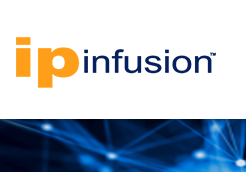"5G is AWESOME" -- that's the message delivered emphatically by Egil Gronstad, Senior Director of Technology Development and Strategy for T-Mobile USA, speaking to a mostly academic audience at the 2018 IEEE 1st 5G World Forum (5GWF’18) in Santa Clara, California this week.
The main takeaway from his half-hour presentation: 5G is happening now at T-Mobile USA. The rollout is real and is proceeding if for no other reason than higher performance, which is always desirable in networking.
Some key takeaways:
Video of Egil Gronstad's presentation:
http://ieeetv.ieee.org/conference-highlights/ieee-5g-world-forum-keynotes-full-stream-day-3-2018
The main takeaway from his half-hour presentation: 5G is happening now at T-Mobile USA. The rollout is real and is proceeding if for no other reason than higher performance, which is always desirable in networking.
Some key takeaways:
- T-Mobile's 5G commercial rollout begins this year in 30 cities and will be fully nationwide within 2.5 years. T-Mobile will deploy its 5G RAN using both 600MHz and 28GHz millimeter wave spectrum. Previously, Nokia confirmed that its equipment has been selected for the initial rollout.
- A key learning is that 5G requires mid-band spectrum and T-Mobile's newly licensed 600 MHz spectrum is a strategic advantage
- Building penetration loss for 5G in mmWave spectrum is significant
- T-Mobile is not expecting to charge more for 5G service compared to its existing plans. The company expects to attract new customers and applications as the cost justification for upgrading to 5G
- Voice needs to ride on the 5G network as soon as possible. In the transition to 4G, it was a mistake for voice to continue on the 3G for so long.
- T-Mobile USA has no current plans for 5G fixed wireless service but is looking very closely at the business case.
- T-Mobile USA has added one million or more users each quarter for the past 20 quarters

Video of Egil Gronstad's presentation:
http://ieeetv.ieee.org/conference-highlights/ieee-5g-world-forum-keynotes-full-stream-day-3-2018



















